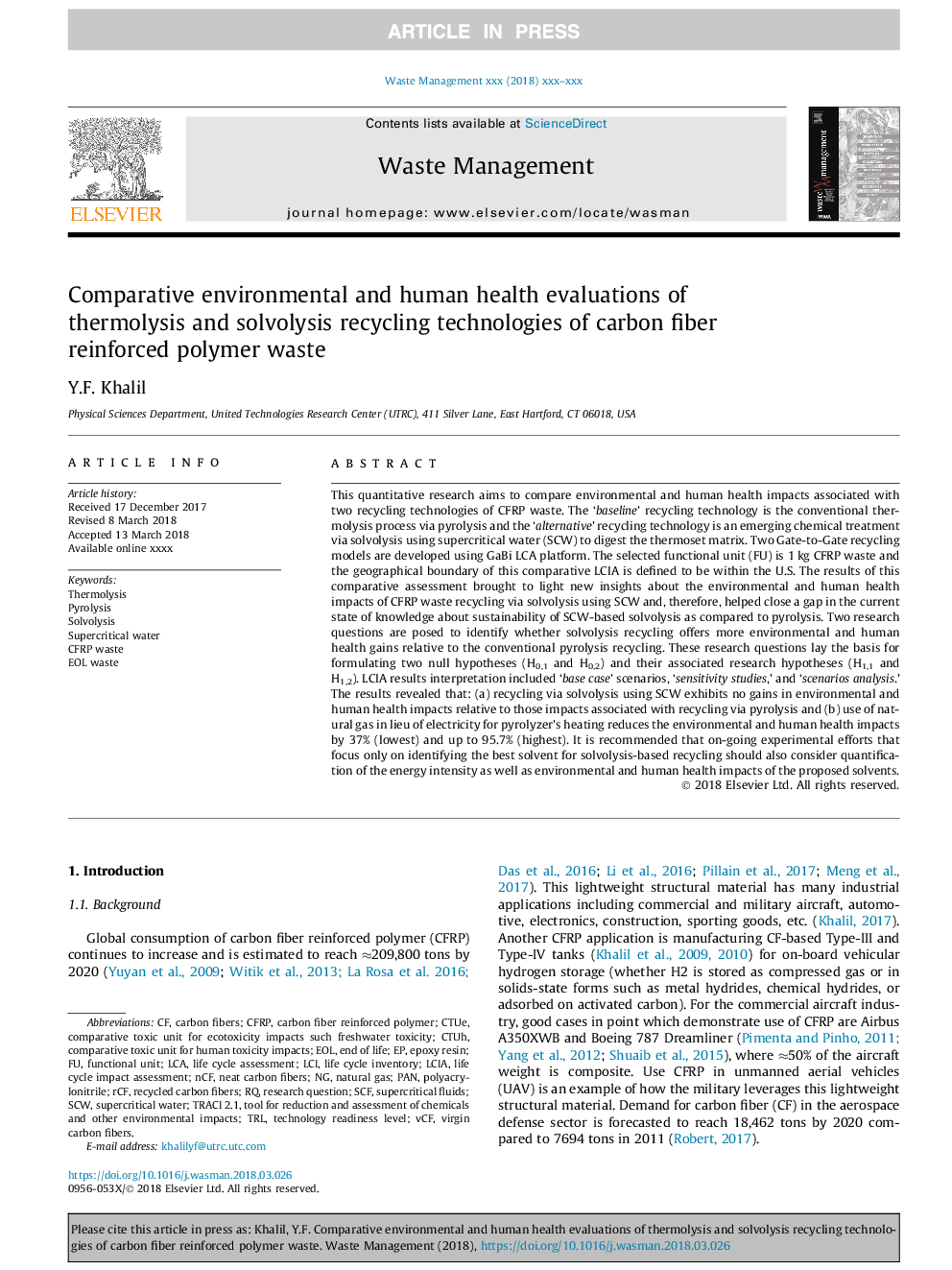| Article ID | Journal | Published Year | Pages | File Type |
|---|---|---|---|---|
| 8869772 | Waste Management | 2018 | 12 Pages |
Abstract
This quantitative research aims to compare environmental and human health impacts associated with two recycling technologies of CFRP waste. The 'baseline' recycling technology is the conventional thermolysis process via pyrolysis and the 'alternative' recycling technology is an emerging chemical treatment via solvolysis using supercritical water (SCW) to digest the thermoset matrix. Two Gate-to-Gate recycling models are developed using GaBi LCA platform. The selected functional unit (FU) is 1â¯kg CFRP waste and the geographical boundary of this comparative LCIA is defined to be within the U.S. The results of this comparative assessment brought to light new insights about the environmental and human health impacts of CFRP waste recycling via solvolysis using SCW and, therefore, helped close a gap in the current state of knowledge about sustainability of SCW-based solvolysis as compared to pyrolysis. Two research questions are posed to identify whether solvolysis recycling offers more environmental and human health gains relative to the conventional pyrolysis recycling. These research questions lay the basis for formulating two null hypotheses (H0,1 and H0,2) and their associated research hypotheses (H1,1 and H1,2). LCIA results interpretation included 'base case' scenarios, 'sensitivity studies,' and 'scenarios analysis.' The results revealed that: (a) recycling via solvolysis using SCW exhibits no gains in environmental and human health impacts relative to those impacts associated with recycling via pyrolysis and (b) use of natural gas in lieu of electricity for pyrolyzer's heating reduces the environmental and human health impacts by 37% (lowest) and up to 95.7% (highest). It is recommended that on-going experimental efforts that focus only on identifying the best solvent for solvolysis-based recycling should also consider quantification of the energy intensity as well as environmental and human health impacts of the proposed solvents.
Keywords
NCFCTUhVCFLCIATRLSCFLCIRCFEOLSCWCFRPsupercritical waterLife cycle impact assessmentLCALife Cycle AssessmentCarbon fibersThermolysisEpoxy resinTechnology Readiness LevelSolvolysisresearch questionPANSupercritical fluidsLife Cycle Inventoryfunctional unitend of lifePolyacrylonitrileCarbon fiber reinforced polymerPyrolysisNatural gas
Related Topics
Physical Sciences and Engineering
Earth and Planetary Sciences
Geotechnical Engineering and Engineering Geology
Authors
Y.F. Khalil,
